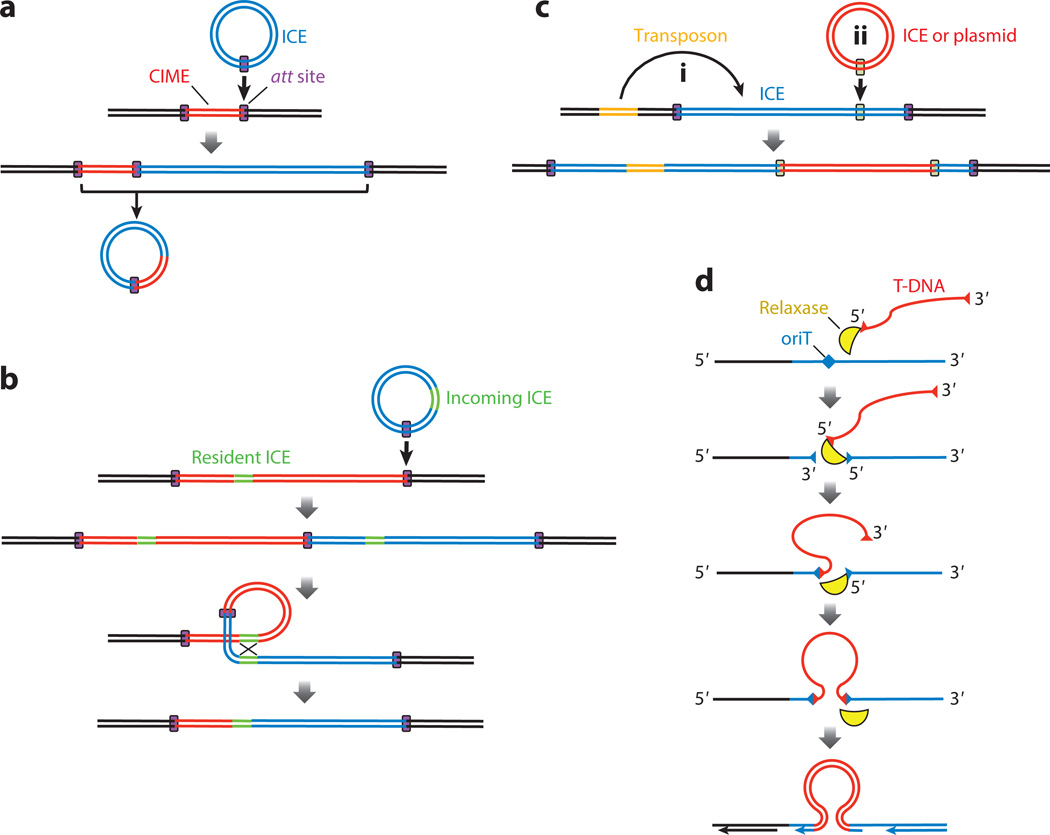Figure 2.
Mechanisms that generate diversity between ICEs (integrative and conjugative elements). Double black lines represent the host chromosome and double red, orange, and blue lines represent mobile genetic elements as indicated. Double green lines indicate regions of homology. Rectangles behind double lines indicate att (attachment) sites or insertion sites. (a) An ICE can insert in an att site (purple boxes) next to a heterologous mobile element, such as a CIME (cis-mobilizable element), generating a construct with a total of three att sites. During excision the ICE might utilize the two att sites farthest apart, thereby generating a single dsDNA circle that contains both elements (CIME and ICE) that then serves as the substrate for conjugation. (b) An ICE can insert into an att site next to another ICE that is occupying the preferred att site, forming a tandem insertion. The tandem ICEs can recombine at regions of homology, removing the intervening sequence and forming a single, chimeric ICE. (c,d) Other mobile genetic elements can insert into an ICE. (c) Elements can transpose from another chromosomal location (Ci), or extrachromosomal elements can recombine into an ICE (Cii) by either site-specific recombination or homologous recombination. These elements then become part of the ICE and are transferred with the ICE in cis during conjugation. (d) T-DNA from an external element can recombine into a cognate oriT site on the ICE. Insertion is more efficient when the oriT is located on the lagging strand, likely indicating that the target is ssDNA, as shown. The relaxase is bound to the transferred DNA at one catalytic tyrosine residue, and nicks and binds the oriT of the resident element with a second catalytic tyrosine residue [both catalytic tyrosine residues are required for this activity (1)]. The relaxase also joins the free 3′-OH end of the chromosomal nick to the 5′ end of the T-DNA and the 3′-OH end of the T-DNA to the 5′ end of the chromosomal nick. The insertion is then replicated by the host machinery and becomes established in the chromosome.

